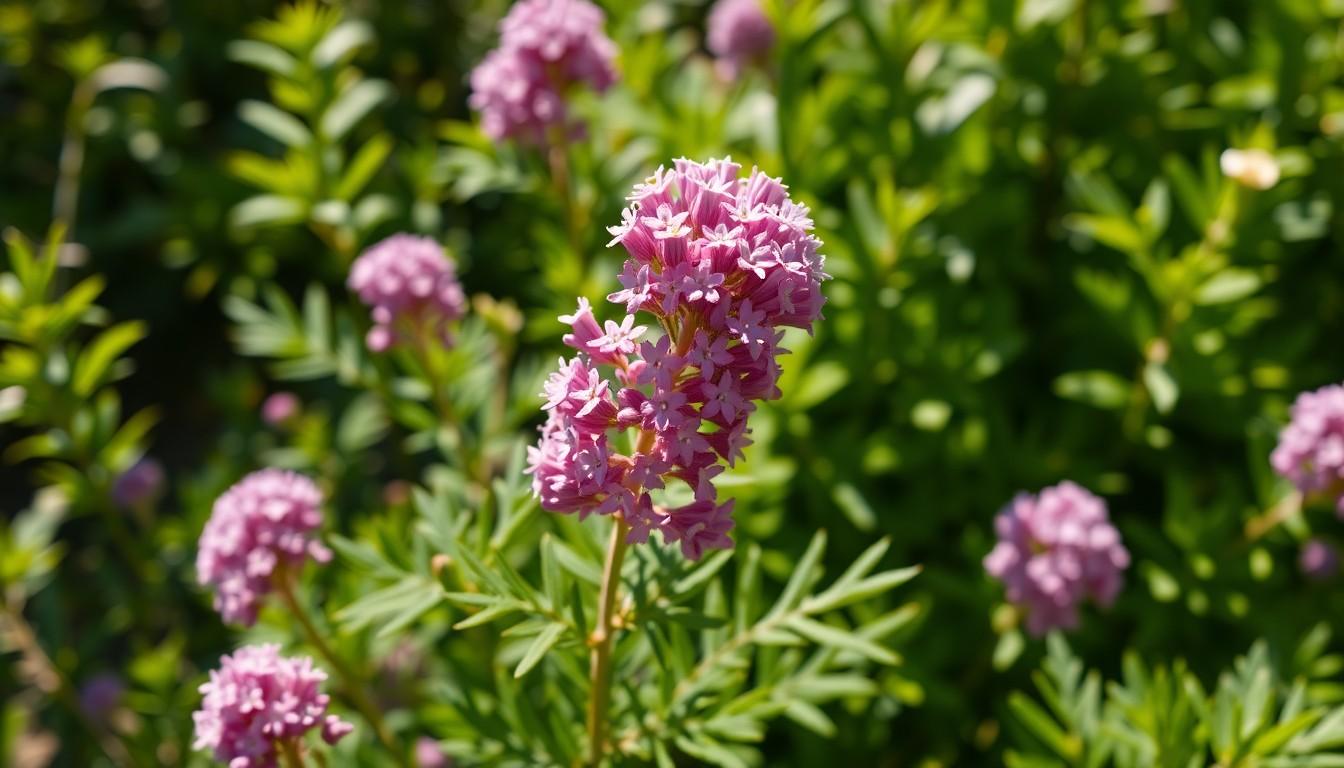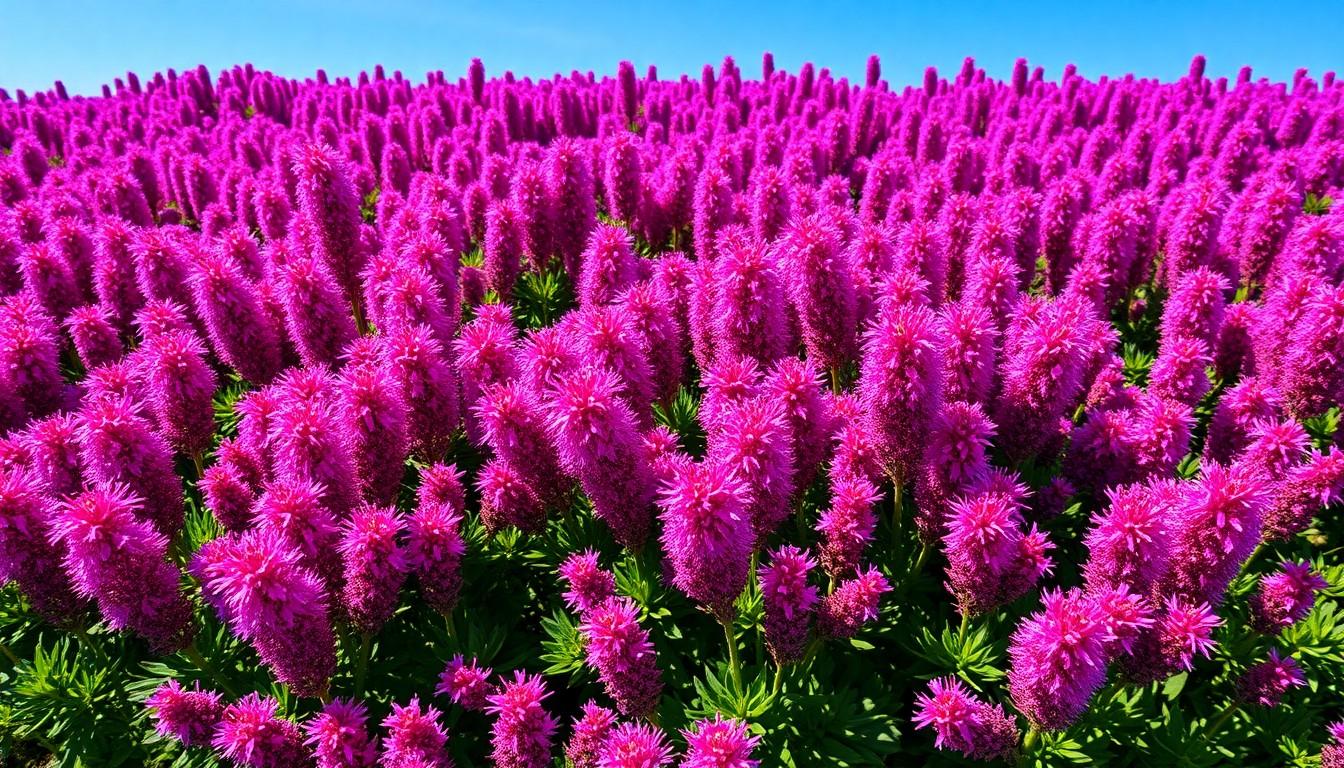If you’ve ever strolled through a garden and spotted a vibrant patch of heather, you know it’s hard to resist its charm. This low-maintenance beauty not only adds a pop of color but also brings a touch of whimsy to any landscape. But before you dive headfirst into heather heaven, it’s essential to know how to care for these delightful plants.
Think of heather as the cool friend who needs just a little attention to thrive. With the right tips and tricks, anyone can cultivate a flourishing heather garden that’ll have neighbors green with envy. Whether you’re a seasoned gardener or just starting out, mastering heather plant care is easier than you think—and way more fun than a trip to the gym! Get ready to unlock the secrets of keeping this lovely plant happy and healthy.
Overview of Heather Plants
Heather plants belong to the Ericaceae family and consist of various species primarily found in Europe and Asia. Gardeners appreciate these plants for their evergreen foliage and vibrant blooms, which typically appear in late summer and fall. Growing heather offers not only aesthetic value but also benefits local ecosystems by providing nectar for pollinators.
Maintenance of heather is relatively straightforward. They thrive in acidic, well-drained soil enriched with organic matter. Conditions in full sun or partial shade promote healthy growth. It’s essential to space heather plants adequately to allow for air circulation and prevent fungal diseases.
Watering practices for heather must consider their moisture preferences. Plants require regular watering during dry spells, yet overwatering can lead to root rot. Mulching in spring assists in retaining soil moisture and suppressing weeds.
Pruning is critical for maintaining the shape and vigor of heather plants. Gardeners should prune heather immediately after flowering, cutting back about one-third of the plant. This practice encourages bushiness and leads to better blooming in subsequent seasons.
Ideal companion plants for heather include azaleas, rhododendrons, and various perennial flowers. Such combinations enhance the overall garden aesthetic and contribute to a harmonious landscape. In addition, heather serves as an excellent ground cover, helping to stabilize soil and prevent erosion in sloped areas.
Cultivating heather plants proves rewarding for both novice and experienced gardeners. Selecting the right variety, providing proper care, and creating a suitable environment by a grow room controller results in a thriving, beautiful garden.
Light Requirements for Heather Plants

Heather plants thrive in specific light conditions that greatly influence their growth and blooming. Understanding these light requirements ensures healthy and vibrant plants.
Full Sun vs. Partial Shade
Full sun exposure enhances heather’s lush growth and blooming potential. It thrives best with at least six hours of direct sunlight each day. In contrast, partial shade offers protection during the hottest parts of the day. While heather tolerates some shade, reduced sunlight can lead to leggy growth and fewer blooms. Locate heather in spots with morning sun and afternoon shade for optimal results. Consider placing it near taller plants that provide gentle shade during peak sunlight hours. Striking a balance between sun and shade fosters a healthy growth environment for heather.
Signs of Light Stress
Light stress manifests through various symptoms in heather plants. Leaves may become discolored, turning yellow or brown when exposed to excessive sun. Growth can slow down, indicating insufficient light for healthy development. Dropping flower buds is another clear sign that heather needs attention. Additionally, leggy growth occurs as the plant stretches toward light sources. Monitor these signs closely for timely intervention. Adjusting heather’s location or providing shade during peak daylight hours can help rectify light-related issues. Recognizing these indicators ensures that heather remains vibrant and healthy.
Soil and Watering Needs
Heather thrives in specific soil and watering conditions that are vital for its health. Understanding these needs enhances the overall growth and vibrancy of the plant.
Ideal Soil Conditions
Acidic soil, ideally with a pH between 5.5 and 6.5, ensures optimal growth. Well-drained soil is essential to prevent root rot, which heather commonly experiences in overly saturated conditions. Loamy or sandy mixes work best, promoting drainage while retaining necessary moisture. Adding organic matter can improve soil texture and nutrient availability. It’s also beneficial to avoid heavy clay soils, which can hinder drainage and lead to complications.
Watering Schedule
Regular watering during dry spells keeps heather healthy and vibrant. Applying water deeply promotes root growth, especially in the first year after planting. It’s important to establish a watering routine, ensuring the soil remains consistently moist but not soggy. Overwatering must be avoided, as this can lead to fungal issues and root decay. A good rule of thumb includes checking the top inch of soil for moisture; if it feels dry, it’s time to water. Following these guidelines aids in maintaining a thriving heather garden.
Pruning and Maintenance
Pruning plays a significant role in maintaining the health and shape of heather plants. It promotes vigorous growth and enhances flowering in the upcoming season.
When to Prune
After flowering, the best time to prune heather is late winter or early spring. Timing the cut encourages new growth while allowing the plant to recover. A light trimming can take place after the last blooming period, ensuring the shaping remains intact. Bud development occurs in summer, so any major pruning should wrap up by early spring. Removing dead or damaged stems promotes better airflow and helps prevent disease.
Tools for Pruning
Using the right tools simplifies the pruning process. Sharp pruning shears work well for delicate stems, while loppers handle thicker branches efficiently. Always ensure tools are clean to prevent the spread of diseases. Gloves protect hands, especially when working with more abrasive varieties. A small hand saw assists with larger branches if necessary. Keeping tools in good condition maintains their effectiveness and promotes healthier plants.
Common Pests and Diseases
Heather plants may face several pests and diseases that can affect their health. Identifying these issues early enhances the chances of recovery.
Identifying Common Issues
Symptoms of pest infestations or diseases can vary. Aphids, for example, appear as tiny green or black insects on new growth. They often cause yellowing leaves and stunted growth. Spider mites produce fine webbing and may lead to leaf discoloration. Additionally, fungal diseases like root rot trigger wilting and a mushy base. Observing these signs allows for timely intervention.
Prevention and Treatment
Preventing issues starts with maintaining optimal growing conditions. Ensure well-drained, acidic soil to mitigate root rot risks. Using insecticidal soap effectively treats aphids and spider mites. For fungal concerns, applying a fungicide promptly can minimize damage. Inspecting plants regularly aids in early detection, while removing any affected plant parts prevents the spread of diseases. Implementing these strategies keeps heather thriving and resilient against common threats.
Conclusion
Caring for heather plants can transform any garden into a vibrant oasis. With their low-maintenance nature and stunning blooms, they’re a perfect choice for both novice and experienced gardeners. Understanding their specific needs for light, soil, and watering is key to ensuring they thrive.
Pruning and regular inspections for pests will keep heather healthy and flourishing. By following these straightforward guidelines, anyone can enjoy the beauty and ecological benefits that heather brings. Embracing heather care not only enhances outdoor spaces but also supports local wildlife, making it a rewarding gardening experience.

